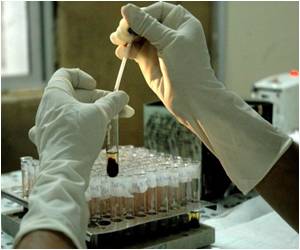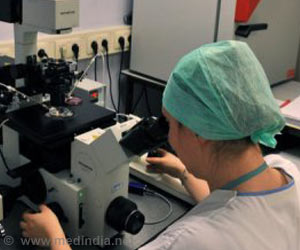
As a demonstration of the potential of the new method, Lerner's team used it for the rapid discovery of an antibody that potently mimics thrombopoietin (TPO), a hormone that controls the production of clot-making platelets in blood.
"The time from selection of the target through discovery of the antibody and completion of initial animal tests totaled only about five months," said Hongkai Zhang, a research associate in the Lerner laboratory who was first author of the study.
The antibody already has been licensed to a pharmaceutical company for further development.
Fast Selection
Antibodies are large, Y-shaped proteins produced by immune cells called B-cells in humans and many other animals. To cope with diverse and ever-changing threats from microorganisms, B-cells are able to rearrange and mutate a small set of their genes, so that collectively they can produce billions of distinct antibodies.
Advertisement
In a major innovation reported last year, Lerner, Zhang and their colleagues developed a basic method for selecting antibodies that not only bind to a given target, such as a cell-surface receptor, but also have a desired biological function—such as activating the receptor on mammalian cells. The researchers demonstrated the method by using it to find a potent antibody mimic, or "agonist," of erythropoietin (EPO), a hormone that stimulates the production of red blood cells.
Advertisement
"We can use this cell-growth test to select for a lot of things—including the discovery of antibodies with potential medical uses – but Dr. Lerner and I wanted a more direct and generally applicable way of selecting for antibody function," Zhang said.
Two Million Test Cells Per Hour
The new method uses a sensitive "reporter system" in test cells, which gives off a fluorescent light signal as soon as an antibody succeeds in activating a receptor, or, in principle, any other targeted signaling pathway. The system also is set up so that each test cell produces a unique antibody, whose effect is confined to that cell. "Each cell represents a separate assay," said Zhang.
With automation technology that can maintain millions of these cultured test cells, infect them with viral vectors that deliver antibody genes, and then detect the cells that fluoresce, the technique is capable of screening two million test cells per hour.
In the new study, the team proved the value of the new technique by using it to discover a potent agonist of TPO, a hormone that is essential for the proper clotting of blood in wound healing. TPO agonists can treat conditions involving a scarcity of blood platelets, for example as a result of cancer chemotherapy.
However, drugs that structurally resemble the TPO hormone can be problematic; about 12 years ago a lab-grown, "recombinant" version of TPO failed in clinical trials when it was found to induce a deleterious anti-TPO antibody response. This left some patients with less TPO and a lowered platelet count—the opposite of the intended treatment effect. Since then, other TPO agonists have been developed without this problem. "But there's a real need for more TPO agonists that don't look like natural TPO," said Lerner.
The most powerful TPO agonist described in the study, antibody 3D9, performed much better in cell-culture tests—that is, required a much smaller amount to activate the TPO receptor on test cells—than TPO itself. At least part of the antibody's potency derives from its greater size and stability compared to a small molecule like TPO, which allows it to stay functional for a longer time.
The mouse TPO receptor is almost identical to human TPO receptor, so Zhang was able to test his antibody agonist in mice. A single, modest dose of 3D9 tripled platelet counts in mice over eight days—a much more potent effect than that reported for recombinant TPO. "This antibody is what I call a super-agonist, because it's more powerful than the authentic TPO agonist," said Lerner. "It also looks superior to the other commercial TPO agonists, based on their reported potencies."
Lerner, Zhang and their colleagues are currently using the new selection method to find other useful antibodies for a variety of applications. One such antibody agonist, which can turn stem-like cells in bone marrow into young brain cells, was described in a report in the Proceedings of the National Academy of Sciences last month.
Source-Eurekalert









